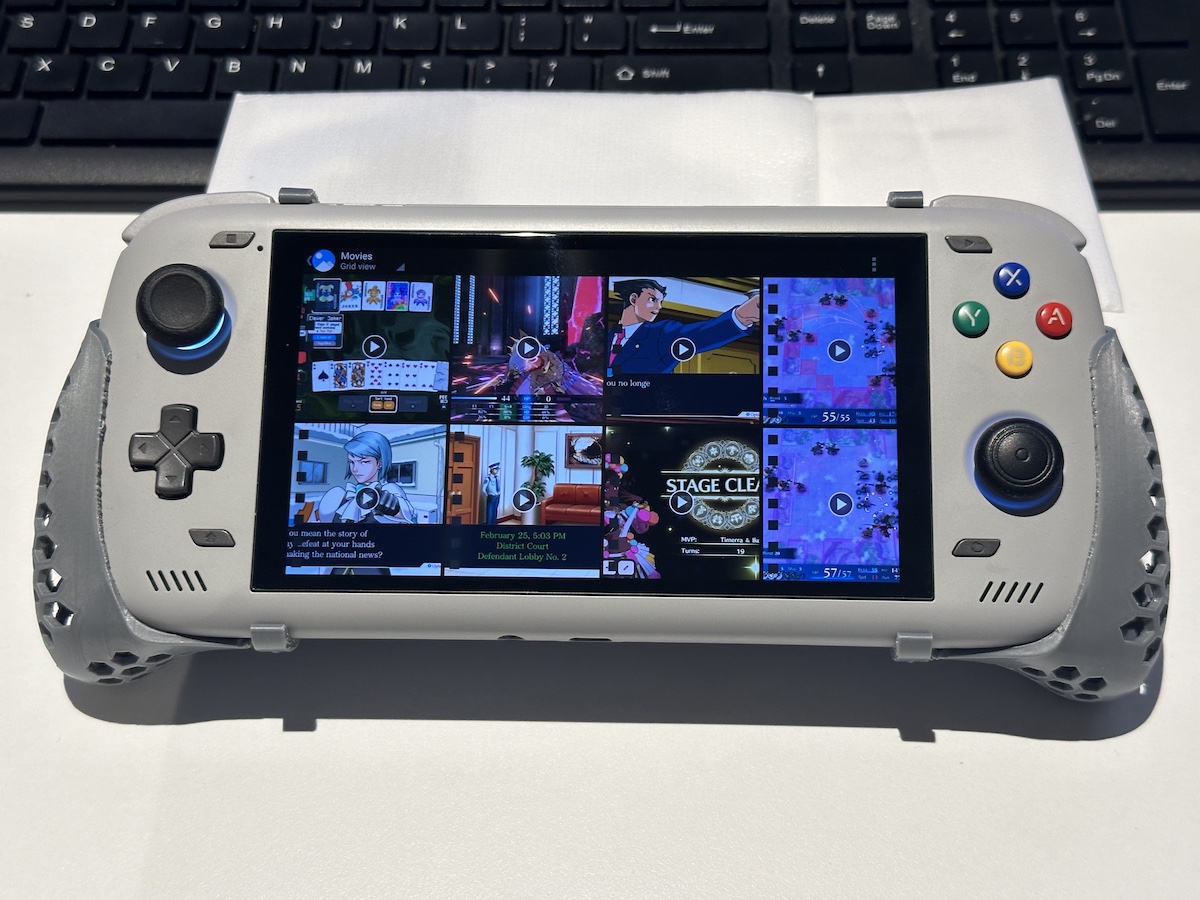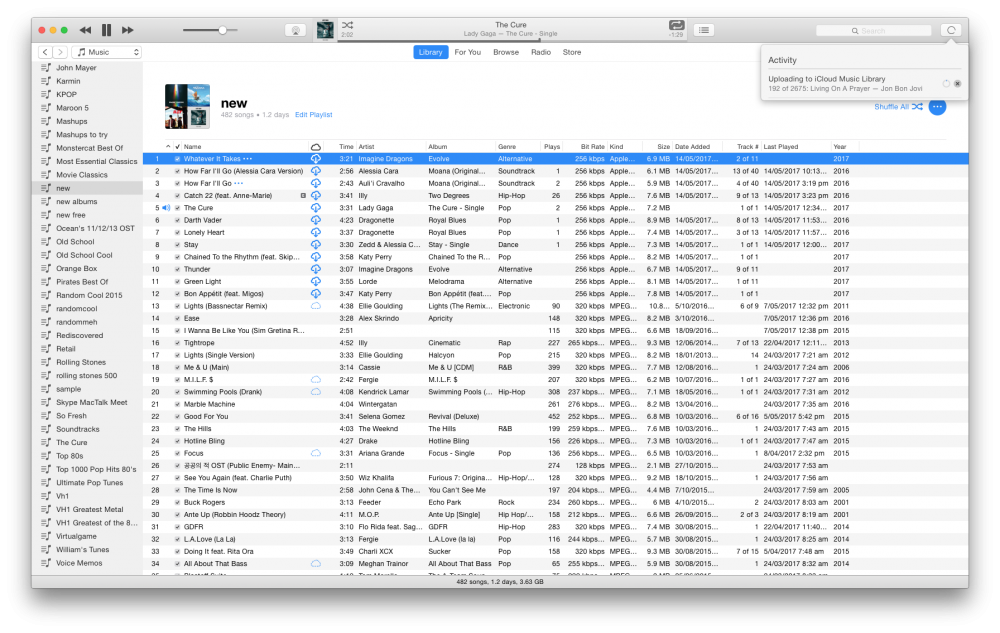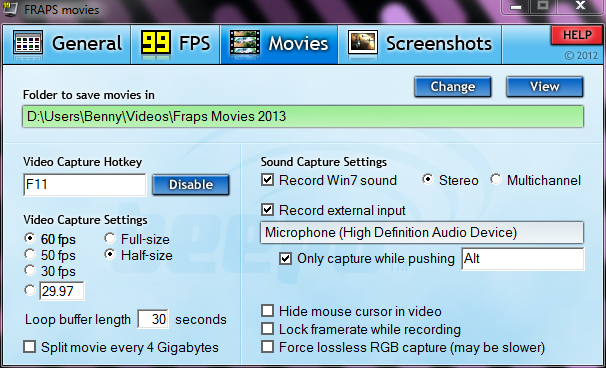
My Ayn Odin 2 with a few small customisations.
A higher right analog stick with Skull and Co thumb grip, and the 3D-printed grips that a friend of a friend gave to me.
In the past year or so, there have been one or two handhelds that have come out which have not only met that performance bar of upscaled GameCube and PS2, but can also come to the party for 3DS, Vita, and even Switch emulation. And between the Retroid Pocket 4 Pro and the Ayn Odin 2, the Odin 2 is the one to get because it runs everything flawlessly, has battery life appropriate for 2024, and very few faults overall. There’s no doubt in my mind that if you wanted a modern handheld console to emulate every system that’s possible to be emulated on Android, the Odin 2 should be your first and foremost choice unless you want something pocketable, or with an OLED screen, or you have a very specific budget.
So why haven’t I bought one?
Had I know about the Odin 2 this time last year, I probably would have. It ticks basically every box that I’m interested in, with perhaps the exception of running actual PC titles on it, even though streaming from my PC might be an acceptable compromise. But after looking into it, it just doesn’t make sense to buy one now, 9 months into its lifecycle. It’s like this: one year ago, there was nothing under $600 that could emulate Switch acceptably. But the handheld console landscape is moving so fast that who’s to say what options we’ll have in another 6-12 months? After all, technology moves at such a rapid pace these days that there’s always something better just around the corner. The fact that you can even consider installing and using fibre optics in your home network at something even close to resembling a reasonable cost — something previously unthinkable not that long ago — is proof of this.
Even if no better options appear by the end of the year, the thinking is I’ll still be able to pick up an Odin 2 and be happy. Hell, I could absolutely do that today. But at this late stage of the game, it would be better for me to exercise some patience and wait six months. I’ve been waiting 20 years to be able to play GameCube and PS2 portably, chances are I can absolutely wait another six months. While I’d love something to play GameCube and PS2 portably now, if I’ve waited this long, I can probably wait another year or two, especially if it’s going to be a significant and meaningful improvement over the Steam Deck/Odin 2. Of course, there’s always better tech just around the corner, but honestly, how much better can it get at the sub-$800 price point?
So my question is really: if I pick up an Odin 2 today, am I going to be missing out on something great that’s potentially just around the corner in the next 6/12/18 months? Because the Steam Deck was basically the precursor to this whole handheld renaissance that we seem to find ourselves in (maybe not for retro games specifically, but it seems to have affected retro games nonetheless), and the Steam Deck has only been around for two short years. Based on my own research, there hasn’t been anything that isn’t a handheld PC that had great GameCube, PS2, and Switch performance for under $800, until last year’s Odin 2 and to a similar degree, the Pocket 4 Pro. It just seems like prior to the Snapdragon 8 Gen 2 SoC, there just wasn’t anything good available at a reasonable price.
Like, the Odin 2 is already powerful enough, with maybe the exception of some Switch titles (and even then with NCE it may not be as big of an issue as it was), so maybe a more powerful chip isn’t that big of a draw card. Where do they go from here, and what other significant hardware changes can they make? The only potential improvements I can think they can make are having an OLED display, with potentially a higher refresh rate. How good a higher refresh rate for retro gaming is questionable, since 8th-generation and consoles typically target 30fps, and it’s not like you can get Switch games to run at 120fps, but this just serves to prove my point that there’s very little Ayn can do to improve the Odin 2.
But thanks to the header image on this post, you already know I ended up buying an Odin 2. I figure if I can get a few solid months out of it, emulating the GameCube and PS2 classics I grew up with, then flip it for close to what I paid, then that’s probably good enough.
Something I didn’t realise is when people talk about upscaling retro games, they mean actual upscaling. It’s not the kind of upscaling you get when you, say, convert a video to play at a higher resolution, because in those cases you’re just attempting to make something from nothing, and often you don’t get anything meaningfully better than the original.
No, video game upscaling is much better than that. Because the video game has access to the source data (the vertices and polygons which dictate how shapes should be rendered on screen), when you upscale a video game it looks incredible. It’s not perfect, because textures might still show their age even though the underlying models are tack sharp, and any pre-rendered assets like photos or videos that aren’t generated from in-game assets will still look blocky, but for the most part, upscaling games from the GameCube and PS2 era to 1080p looks great, and if you add in a HD texture pack, that’s about as close to a remaster as you can get, barring any actual quality-of-life improvements that an actual remaster might give you.
Or a Switch port, if your game is lucky enough to be in that camp.




